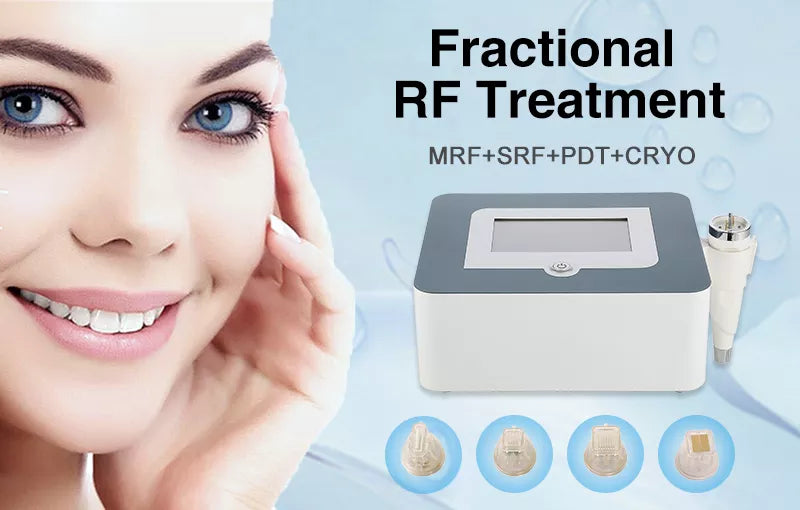Microneedling RF vs Fractional RF: Choosing Wisely
 Summary:
Summary:
Microneedling RF and Fractional RF are both powerful non-surgical rejuvenation technologies that use radiofrequency energy to stimulate collagen and elastin.
While they share the same principle — heating skin tissues for controlled renewal — their delivery systems, treatment depth, and outcomes differ.
Choosing the right one depends on your clinic’s goals: resurfacing texture or tightening deeply.
Microneedling RF vs Fractional RF: Key Differences
| Feature | Microneedling RF | Fractional RF |
|---|---|---|
| Energy Delivery | Delivers RF energy through insulated or non-insulated microneedles into the dermis | Delivers RF energy through fractional grids or tips on the skin’s surface |
| Treatment Depth | Adjustable 0.5–3.5 mm depth, targets deep dermal layers | Surface to mid-dermis (0.2–1.5 mm) for resurfacing and texture improvement |
| Best For | Skin tightening, acne scars, deep wrinkles, lifting | Pore refinement, superficial wrinkles, tone correction |
| Downtime | 2–3 days mild redness | 1–2 days light flaking or sensitivity |
| Combination Use | Can be combined with cold hammer or LED post-care | Often paired with serums or hydra facial for faster recovery |
 When to Choose Each
When to Choose Each
-
Choose Microneedling RF if your clients seek lifting, firming, and acne scar reduction.
-
Choose Fractional RF if you want to focus on texture, pores, or mild pigmentation.
For many clinics, offering both allows a tiered rejuvenation program — starting with Fractional RF resurfacing and following with Microneedling RF tightening for long-term results.


